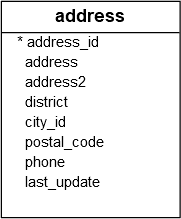Summary: in this tutorial, you will learn how to use the PostgreSQL CREATE INDEX statement to define a new index for a table.
Introduction to PostgreSQL CREATE INDEX statement
An index is a separate data structure that enhances the speed of data retrieval from a table, at the cost of additional writes and storage required to maintain it.
An index allows you to improve the query performance when using it appropriately, especially on large tables.
To create an index on one or more columns of a table, you use the CREATE INDEX statement.
Here’s the basic syntax of the CREATE INDEX statement:
CREATE INDEX [IF NOT EXISTS] index_name
ON table_name(column1, column2, ...);In this syntax:
- First, specify the index name after the
CREATE INDEXclause. - Second, use the
IF NOT EXISTSoption to prevent an error if the index already exists. - Third, provide the table name to which the index belongs.
- Finally, list out one or more indexed columns inside the () after the table name.
Note that the syntax of the CREATE INDEX statement is more complex than this. We’ll cover additional features of the CREATE INDEX statement in the upcoming tutorials such as unique indexes, indexes on expressions, partial indexes, and multicolumn indexes.
By default, the CREATE INDEX statement creates a B-tree index, which is appropriate for most cases. We’ll show you how to create other index types.
PostgreSQL CREATE INDEX statement example
We’ll use the address table from the sample database for the demonstration:
 First, connect to the PostgreSQL
First, connect to the PostgreSQL dvdrental sample database using psql:
psql -U postgres -d dvdrentalSecond, execute the following query to find the address whose phone number is 223664661973:
SELECT
address_id,
address,
district,
phone
FROM
address
WHERE
phone = '223664661973';Output:
address_id | address | district | phone
------------+--------------------+-----------+--------------
85 | 320 Baiyin Parkway | Mahajanga | 223664661973
(1 row)To find the row whose value in the phone column is 223664661973, PostgreSQL must scan the entire address table.
Third, show the query plan using the following EXPLAIN statement::
EXPLAIN SELECT
address_id,
address,
district,
phone
FROM
address
WHERE
phone = '223664661973';Here is the output:
QUERY PLAN
---------------------------------------------------------
Seq Scan on address (cost=0.00..15.54 rows=1 width=45)
Filter: ((phone)::text = '223664661973'::text)
(2 rows)The output indicates that the query optimizer has to perform a sequential scan on the address table.
Fourth, create an index for the values in the phone column of the address table using the CREATE INDEX statement:
CREATE INDEX idx_address_phone
ON address(phone);When you run the CREATE INDEX statement, PostgreSQL scans the address table, extracts data from the phone column, and inserts it into the index idx_address_phone.
This process is called an index build. By default, PostgreSQL allows reads from the address table and blocks write operations while building the index.
Fifth, show the indexes that belong to the address table from the pg_indexes:
SELECT
indexname,
indexdef
FROM
pg_indexes
WHERE
tablename = 'address';Output:
indexname | indexdef
-------------------+-----------------------------------------------------------------------------
address_pkey | CREATE UNIQUE INDEX address_pkey ON public.address USING btree (address_id)
idx_fk_city_id | CREATE INDEX idx_fk_city_id ON public.address USING btree (city_id)
idx_address_phone | CREATE INDEX idx_address_phone ON public.address USING btree (phone)
(3 rows)The output shows that the idx_address_phone has been created successfully.
Two other indexes address_pkey and idx_fk_city_id were created implicitly when the address table was created.
More specifically, the address_pkey index was created for the primary key column address_id and idx_fk_city_id was created for the foreign key city_id column.
Fifth, execute the following query again:
EXPLAIN SELECT
address_id,
address,
district,
phone
FROM
address
WHERE
phone = '223664661973';Output:
QUERY PLAN
----------------------------------------------------------------------------------
Index Scan using idx_address_phone on address (cost=0.28..8.29 rows=1 width=45)
Index Cond: ((phone)::text = '223664661973'::text)
(2 rows)The output indicates that PostgreSQL uses the index idx_address_phone for the lookup.
Summary
- Use the
CREATE INDEXstatement to create an index. - Use the
EXPLAINstatement to explain a query.